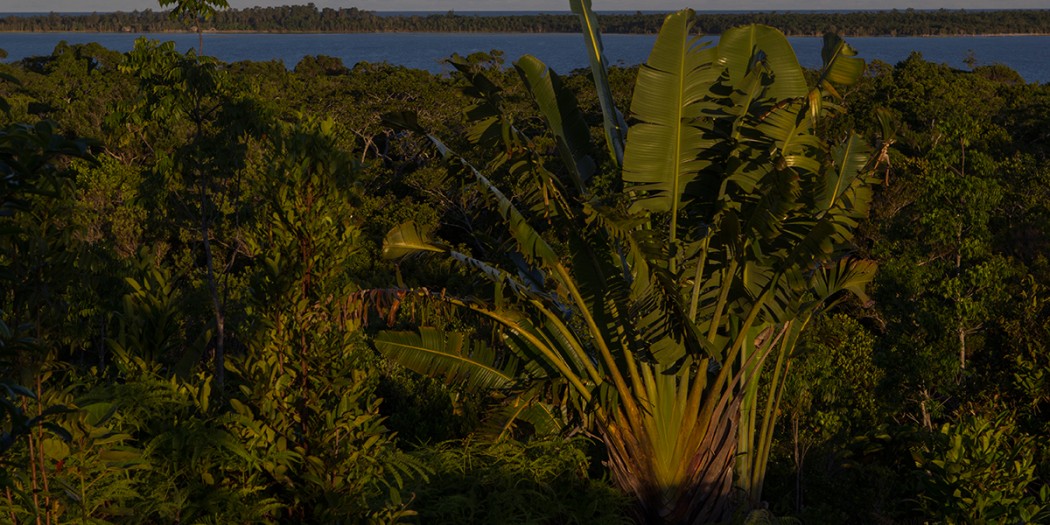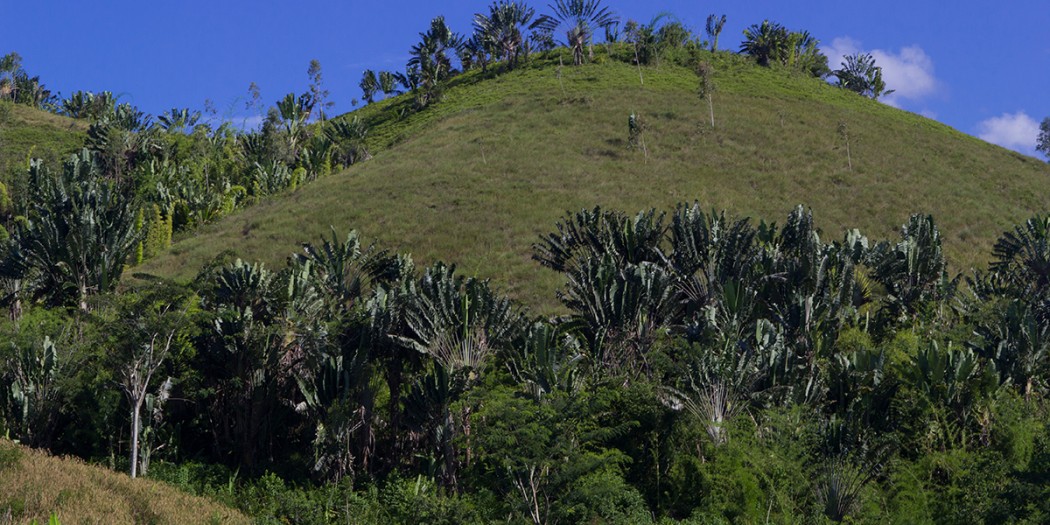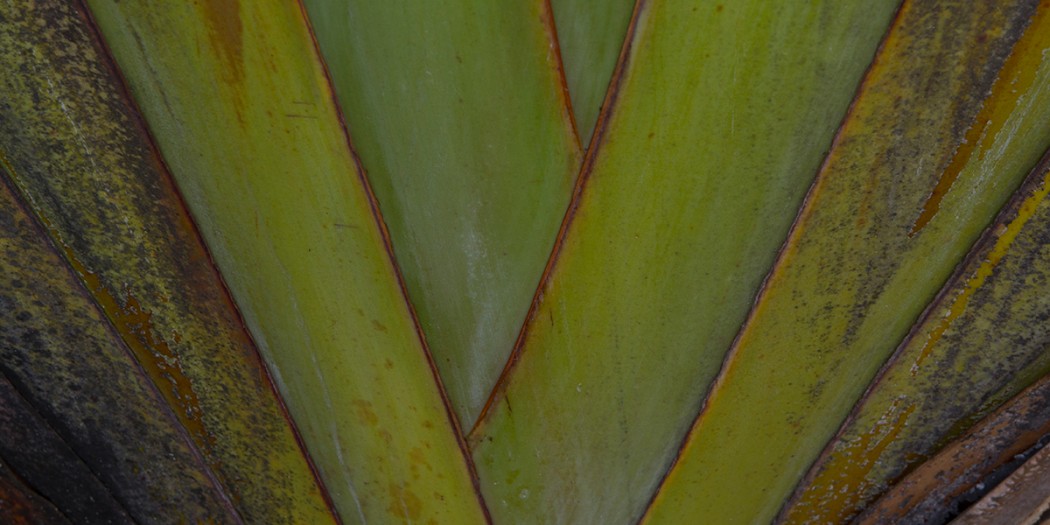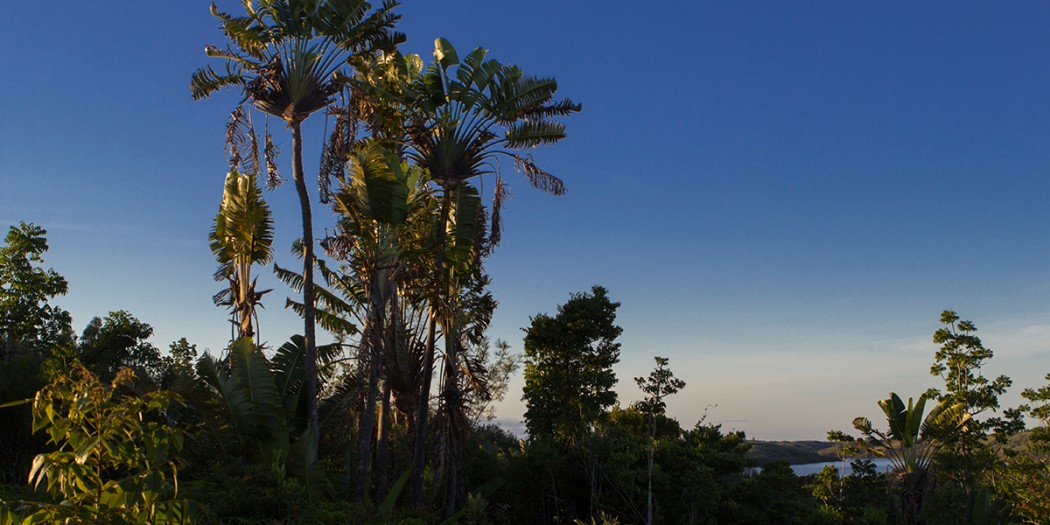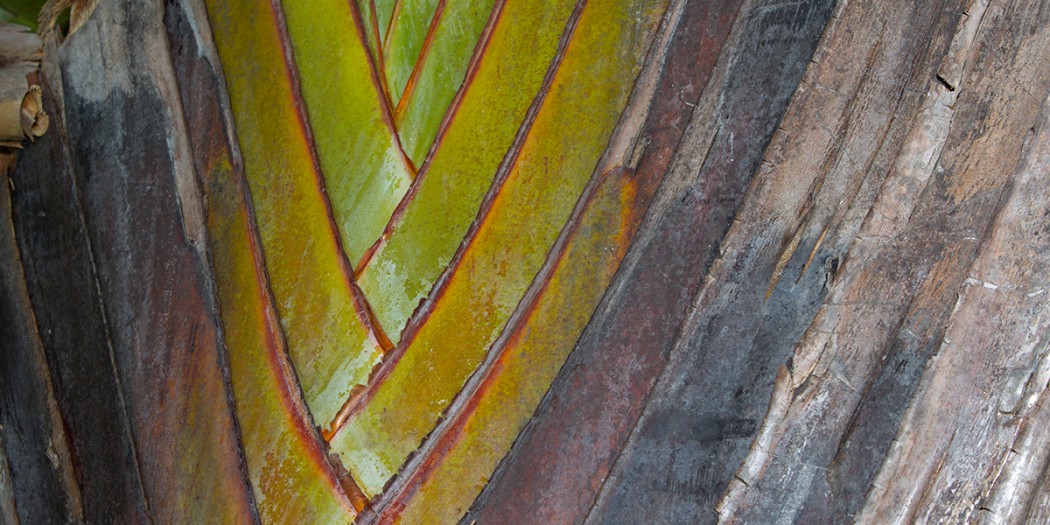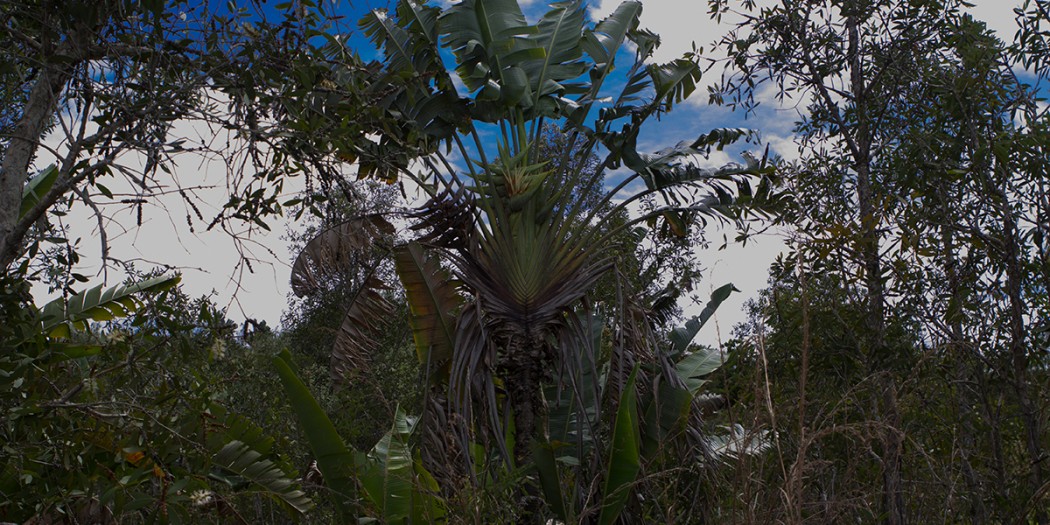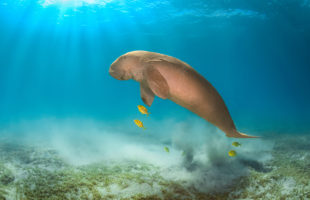The Ravenala, better known as the tree of travelers, belongs to the strelitzia family, despite resembling a palm tree. Although it is now common all over the world and is even cultivated as an ornamental plant in some homes, it originated in Madagascar and only occurs naturally there.
Ravenalas grow from six to thirty meters and are particularly known for their typical, semicircular, long leaves. Each leaf can reach a length of up to three meters. The trunk can grow up to 30 cm thick. The plant got its name from its versatile uses: It provides a roof over the traveler’s head when it rains – even today many huts in Madagascar are covered with Ravenala leaves and built from the stems of the plant. Travelers can also quench their thirst with the water collecting in the leaf axils of the Ravenala, or satisfy their hunger through the edible (but somewhat floury) seeds and leaf tips. Finally, the Ravenala serves as an orientation for travelers: it usually grows in an east-west direction.
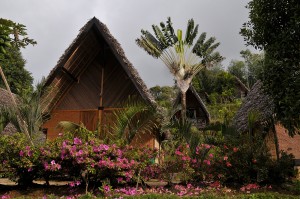
Until well into our time, people assumed that all ravenalas belonged to the same species. But in Madagascar they already knew different names for the different looking trees of the travelers. Today it is known that there are six species of Ravenalas in Madagascar. On the one hand there is the 10 to 15 meter high Ravenala blancii or Malagasy Malama. It is most noticeable as a young plant. Young Ravenala blancii look a bit like bird nest ferns, with leaves arranged in a ring and hanging down. This massively distinguishes it from all other Ravenalas, whose young plants already form irregular leaf fans. It is believed that this special shape allows the Malama to be particularly effective in capturing the light necessary for growth at the bottom of the rainforest. Accordingly, Ravenala blancii is only found in dense rainforests of the highlands, for example around Andasibe or Ranomafana. It is probably the most evolutionarily evolved Ravenala with the most specialized adaptation to its habitat.
A second species is the somewhat faster growing Ravenala menahirana or Malagasy Menahirana. Its name already describes its most striking feature: Mena hirana means red rays, alluding to the coloration of the leaf stalks. The margins of its large leaves have broad, dry edges that form characteristic zigzag lines. Ravenala menahirana grows on the northeast coast of Madagascar from Mahavelona to Mananara. Some trees of travelers of this species are known from Marojejy and Masoala. There, where every year cyclones tear large gaps in the forests, the Menahirana takes advantage of the gaps created.
The Bemavo or Ravenala grandis is the third species of the Travelers’ tree, and is found mainly between 200 and 500 m in the Malagasy highlands. It is found especially on so-called inselbergs. It also reaches the greatest height of growth, up to 30 meters. The leaves of Ravenala grandis, once the plant is fully grown, are almost perfectly fanned out. They are particularly robust and leathery compared to the leaves of other Ravenalas. That is why Bemavo leaves are found on many Malagasy roofs.

The fourth species is Ravenala madagascariensis, in Malagasy Horonorona. This traveler’s tree is the most widespread in Madagascar and is not a giant at six to twelve meters. You find Ravenala madagascariensis along the entire east coast, from Tolagnaro in the south to about Maroantsetra. Only the northernmost tip of Madagascar is not inhabited by the Horonorona. Its wide distribution probably also has to do with the fact that the Horonorona can form shoots via its roots. This unusual form of reproduction is shared by only one other Ravenala species. Preferably, the Horonorona grows in small valleys directly above rivers or in wet, swampy areas directly on the coast.
A fifth species of the Tree of Travelers is Ravenala hladikorum from the central, eastern, and southern highlands of Madagascar around Andasibe and Ranomafana. Around Manombo, this Ravenala is known by the Malagasy name Tokam-pototra. It grows about 10 to 15 meters high. Its leaves still form an irregular fan even as an adult plant. And finally, there is Ravenala agatheae. The Malagasy name maroanaka could go back to this tree of the travelers, but this is not sure yet. Ravenala agatheae is the only Ravenala found mainly in the northwest of Madagascar around Ambanja. It has even made it to the island of Nosy Be and as far as Mahajanga. Seasonally, this traveler’s tree likes it rather dry and warm. Like Ravenala madagascariensis, it can reproduce by root sprouts. All other Ravenalas are pollinated primarily by birds that perch on the bracts to get at the nectar in the flowers below. The flowers are small, white, and relatively inconspicuous. When a bird touches them with its beak, the flower literally explodes, spreading its pollen over the bird, which then takes it to the next ravenala. Depending on the region, lemurs (mostly ruffed lemurs) also do the pollination, making the travelers’ tree an even more special plant: Only a few species worldwide are pollinated by mammals.
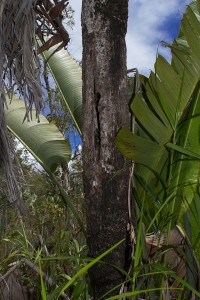
If a Ravenala is fertilized, it forms long capsule fruits with bright blue seeds. They need special conditions to germinate successfully and become impressive trees. In the case of the freshly sprouting plants, the trunk of the tree is still under the ground, it takes years until the typical crown of the Ravenala rises into the air. When growing, the Ravenala is a symbol of the mora, mora, or “take it easy” of Madagascar: it grows slowly and deliberately, sprouting only 10 to 20 leaves per year.
Due to its striking shape and its many uses, the traveler’s tree quickly became Madagascar’s heraldic plant. Since 1922 the Ravenala has adorned Madagascar’s official seal with its stylized palm fronds, and since the 1960s its silhouette has been included in the logo of the state-owned airline Air Madagascar. According to legend, the Tree of Travelers can even fulfill wishes – but of course, only travelers who really make it to Madagascar.
- Identification guide for Malagasy Ravenalas
- Description of five new species of the Madagascan flagship plant genus Ravenala
Scientific Reports 11 | France 2021 | Authors: Thomas Haevermans et al. - The variants of Ravenala in natural and anthropogenic habitats
Natural History of Madagascar | USA 2003 | Authors: Patrick Blanc, Annette Hladik et al.

If a Ravenala is fertilised, it forms long capsule fruits in which the bright blue seeds are located. They need special conditions to germinate successfully and become an impressive tree. In the case of the freshly sprouting plants, the trunk of the tree is still under the ground, it takes years until the typical crown of the Ravenala rises into the air. When growing, the Ravenala is a symbol of the mora, mora or “take it easy” of Madagascar: it grows slowly and deliberately, sprouting only 10 to 15 leaves per year.
Due to its striking shape and its many uses, the traveler’s tree quickly became Madagascar’s heraldic plant. Since 1922 the Ravenala has adorned Madagascar’s official seal with its stylized palm fronds, and since the 1960s its silhouette has been included in the logo of the state-owned airline Air Madagascar.
According to legend, the Tree of Travelers can even fulfill wishes – but of course only travelers who really make it to Madagascar.
 MADAMAGAZINE Your Magazine about Madagascar
MADAMAGAZINE Your Magazine about Madagascar
